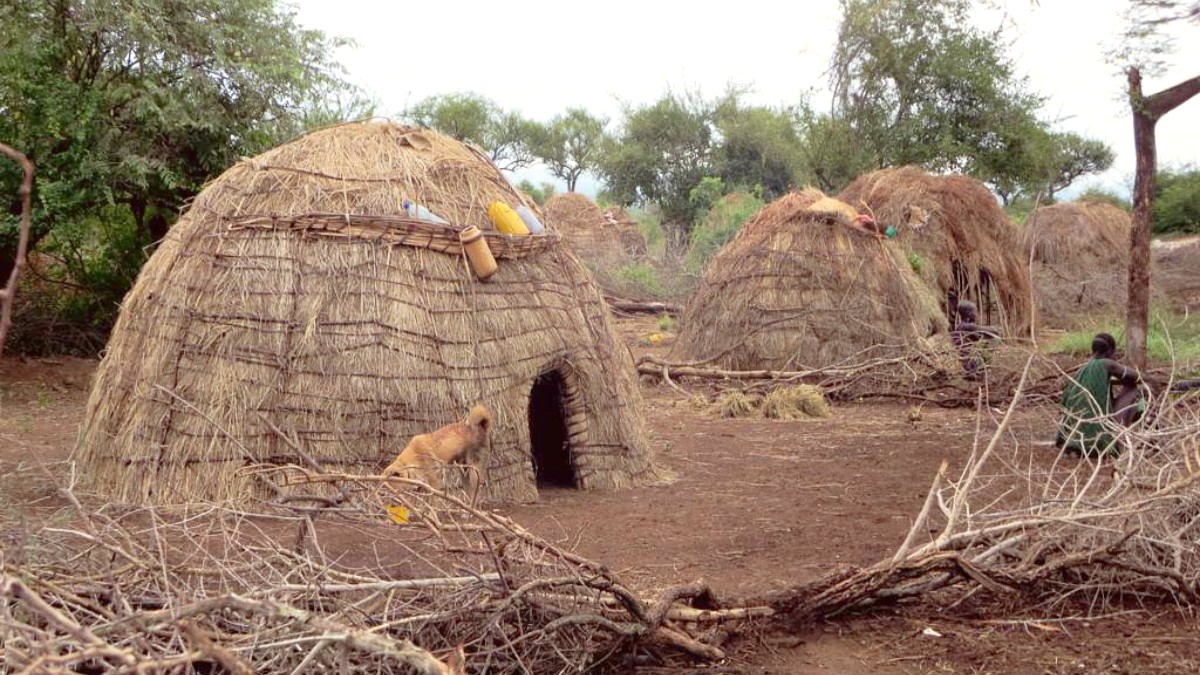
Ethiopia
Ethiopian national cuisine centers around injera, a spongy, sourdough flatbread. Injera acts as both the plate and the utensil for scooping up stews (wot) or vegetable dishes. This communal dining style fosters sharing.
ingredients include Berbere (chili pepper blend), Mitmita (hotter chili blend), Niter Kibbeh (spiced clarified butter), Teff (gluten-free grain for injera), and common vegetables like cabbage, potatoes, carrots, lentils, and chickpeas. Meats like beef, lamb, chicken, and goat are used less often in remote tribal areas.
Food in the Omo Valley is generally simpler than in central Ethiopia. Expect staple injera with basic vegetable wot, pasta, or rice dishes.
Access to fresh produce and diverse ingredients can be limited, especially in smaller towns.
Lodges attempt to provide a mix of Ethiopian dishes and simple Western-style meals. Traditional tribal foods are not typically offered to tourists.
The staple, a spongy, sour flatbread. It serves as the foundation for most meals.
Found at: Local lodges and restaurants
A rich, spicy chicken stew often with a hard-boiled egg on injera. A national favorite.
Found at: More likely in larger towns like Arba Minch, limited in remote lodges
A common vegetarian stew from powdered chickpeas and spices. A widely available vegetarian option.
Found at: Widely available in lodges and local eateries
Cubed beef, lamb, or goat sautéed with onions, garlic, and peppers. Available in lodges and some local restaurants.
A simple, often vegetarian side dish of green beans and carrots, offering a lighter meal.
Lodges and guesthouses frequently have their own restaurants, serving a mix of Ethiopian dishes and basic Western options.
Local eateries, called "hotels," exist in towns. They serve basic Injera dishes. Local markets sell produce and grains.
International cuisine options are limited to basic pasta or rice dishes offered by lodges.
Formal cooking classes and organized food tours are not typically available in the Omo Valley.
The focus here is cultural immersion, not gastronomic tourism.
Visits to local farms or markets can be part of cultural tours. This provides glimpses into local food production and traditional farming methods.
Learn how communities source their food.
Food is part of tribal ceremonies, but not a separate tourist event.
Many vegetable wots, shiro wot, and salads are common ("tsom fiseh" for fasting food).
Injera from 100% teff is naturally gluten-free. Confirm with staff.
Halal meat may be available in some areas. Kosher food is not. Bring supplements for strict needs.
Bring a good supply of your own preferred snacks and supplemental food items, especially if your dietary needs are strict or complex.
This helps bridge gaps in local availability.
Clearly communicate your dietary needs to your tour operator well in advance. They can arrange meals at lodges.
This supports tailored meal planning.
Street food is limited in the Omo Valley. In towns like Jinka, roasted corn, local bread, or simple fried snacks might be found.
Food availability is generally consistent but limited to staple items. During tribal ceremonies, local brews and roasted meat may be consumed by locals as part of their rituals.
Dining in the Omo Valley is generally simpler than in Ethiopian cities, with staples like injera, pasta, and rice.
Ethiopian dining traditions involve communal eating with the right hand. "Gursha" expresses friendship.
Ethiopian cuisine frequently offers vegetarian and vegan options, especially during fasting periods.
Complex allergy understanding may be limited in remote Omo Valley areas.
Carry a translated allergy card if severe.
Travelers with strict or complex dietary needs may benefit from bringing supplemental food items.
Especially if traveling independently.
Rely solely on bottled or purified water for drinking and brushing teeth.
Do not consume ice unless you are certain it was made from purified water.
Prefer fruits you can peel yourself and thoroughly cooked dishes to uncooked vegetables.
While exploring, remember that food options outside of lodges may be very basic. It is a journey of cultural discovery, which extends to the culinary experience.